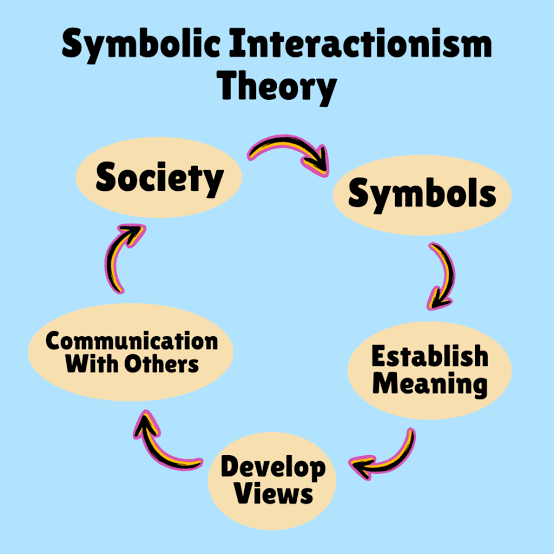Symbolic interactionism is a sociological theory that focuses on how people create and interpret meanings through social interactions. He explains how human behavior is shaped by symbols, language and shared meanings rather than large social structures such as class or institutions.

This theory is widely used to study subjects such as identity, communication, relationships and social norms.
Origins and key thinkers
Symbolic interactionism emerged at the beginning of the 20th century and was strongly influenced by three key sociologists:
- George Herbert Mead (1863–1931)
- Considered the founder of symbolic interactionism.
- Argued that people develop their feeling of self by interactions with others.
- Believed that language and symbols are at the heart of human communication.
- Herbert Blumer (1900-1987)
- Invented the term “symbolic interactionism”.
- Expanded the ideas of Mead and formalized theory.
- Erving Goffman (1922-1982)
- Has developed the concept of “the dramaturgical approach”, where life is considered a performance.
- Suggested that people present different versions of themselves depending on the social framework.
Fundamental principles of symbolic interactionism
- Humans act according to meaning
- People do not instinctively react to situations; They interpret them first.
- Example: a police uniform is not only clothes – it symbolizes authority, which influences the way people behave with an officer.
- Meaning comes from social interaction
- The meanings are not fixed; They develop by interactions with others.
- Example: a handshake can mean respect in one culture but be unknown in another.
- Meanings can change by interpretation
- People constantly redefine meanings depending on experiences.
- Example: a child can consider school as boring, but after having engaged teachers and friends, they could see him as exciting.
Key concepts in symbolic interactionism
1. Symbols
The symbols are all that carries the meaning: words, gestures, objects or behaviors.
- Example: a symbol of the heart represents love.
- Example: a national flag represents a country and its values.
2. The self and identity
- THE “self” is developed by social interactions.
- People see themselves according to the way others react to them (called The “glass self” by Charles Cooley).
- Example: a student rented for their intelligence begins to consider himself intelligent.
3. Roles
- People learn to understand others by putting themselves in their place.
- Example: a child playing the “teacher” learns authority and responsibility.
4. The dramaturgical approach (Goffman)
- Life is like a scene, where people play different roles.
- People present themselves differently in different contexts (behavior in the first scene vs behind the scenes).
- Example: a person behaves professional at work (scene before) but is relaxed at home (behind the scenes).
Examples of symbolic interactionism in everyday life
1. Social media and online identity
- People carefully create their characters online.
- Tastes, comments and emojis shape self -esteem and identity.
2. Clothing and personal appearance
- What people carry send messages to their status, culture and personality.
- Example: a business costume means professionalism; A punk outfit can represent the rebellion.
3. Roles and gender expectations
- The meanings of masculinity and femininity are shaped by society.
- Example: in some cultures, pink is for girls and blue is for boys – although these meanings can change over time.
4. Daily conversations
- The way people greet themselves (hand handles, arches, hugs) depends on cultural meanings.
- Sarcasm and humor are based on a shared understanding of symbols.
Critique of symbolic interactionism
- Too focused on small interactions
- Critics argue that it ignores major social structures such as economics, politics and class.
- It does not explain the main problems such as poverty, inequalities or social institutions.
- Subjectivity
- Since meanings vary according to the person and culture, theory lacks clear predictions.
- It is difficult to scientifically measure symbols and interpretations.
- Neglects power and conflicts
- Contrary to conflict theoryIt does not focus on social struggles or inequalities.
- This does not explain why certain meanings dominate on others (for example, why certain cultural norms are applied).
Conclusion
Symbolic interactionism provides a powerful objective to understand how individuals create social reality through communication and shared symbols. He underlines the importance of the human agency and the role of interaction in the formation of identity, culture and relationships.
Although it cannot explain social structures on a large scale, it remains an essential theory in sociology, psychology and communication.
Discussion question:
How do symbols shape your daily interactions? Think of a situation where a symbol or a gesture has changed the way you behave!


